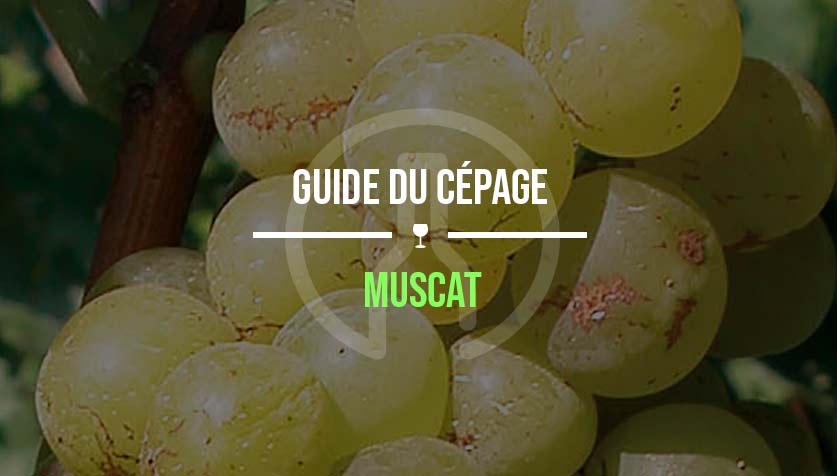Surely one of the largest families of grape varieties in the world!
-
A multitude of grape varieties
Renowned ampelographer Pierre Galet describes over 150 grape varieties that bear the name Muscat. All these grape varieties, whether white, rosé or red, whether eaten or used to make wine, are grouped together under the name Muscat, characterized by their muscat-like aromas reminiscent of Musc (an animal substance often used to produce perfumes).
Muscat grapes can be vinified to produce dry, sweet or sparkling wines.
Each is different, depending on the country of production and the winemaking method used.
-
The origins of Muscat
There are two distinct families of Muscat. Muscat from Vitis vinifera (the vine) or hybrid Muscat (a cross between different vines).
In the Vitis vinifera family, we find Muscat à petit grain, without doubt the oldest Muscat. Originally from Greece, it is now found all over the world, especially in France, where it produces wines such as Muscat de Frontignan. In Germany, it's known as Muskateller. It is also planted in Italy to produce Moscato d'Asti.
Still in the same family, Muscat d'Alexandrie, originally from Egypt as its name suggests, is also a grape variety that has been duplicated all over the world. We find it in Australia under the name Lexia and in Spain, where it produces Moscatel.
Muscat Ottonel is the latest addition to the hybrid family. Used to vinify Alsace wines, it is a cross between Chasselas and Muscat de Saumur.
-
Muscat in France
It is found mainly in the warmer regions of southern France, as well as in Alsace, where it is one of the noble grape varieties.
Muscat d'Alsace has a singularity. It may come from Muscat Ottonel (a cross between Chasselas and Muscat de Saumur) and/or Muscat à petit grain. Its other distinctive feature is that it is vinified as a dry wine. It therefore unfurls its full aromatic palette of muscat fruit and spices, but with lovely balance and freshness.
Clairette de Die also comes from Muscat. This time, it's Muscat à petit grain, but can be blended with Clairette Blanche, which adds a little finesse to the wine.
Muscat de Frontignant is also made from Muscat à petit grain grapes. Almost all the vines are located in the commune of Frontignan. The grapes must have a minimum of 252 grams of sugar before harvest to qualify for the appellation.
Muscat de Beaumes de Venise is one of two Rhône Valley appellations, along with Rasteau, to offer a natural sweet wine. This time, Muscat à petit grain grapes come in white and red. It is therefore possible to vinify white, red and rosé wines. As with Frontignan, Muscat must contain 252 grams of sugar before it can be harvested.
Muscat de Rivesaltes may be a blend of Muscat à petit Grain blanc and Muscat d'Alexandrie Blanc. Grape ripeness is identical to that of previous Muscat wines. Ageing for a minimum of 12 months makes Rivesaltes Muscat wines complex and full of character.
You can also find Muscat under the appellation Vin de Pays d'Oc. These wines are also made from Muscat à Petit Grain and/or Alexandria grapes.
What to eat with a Muscat wine?
-
As an aperitif, small bites of salad and cheese
Nothing recalls the freshness and fruitiness of a Muscat du Pays d'Oc like a leaf of endive accompanied by a piece of cheese. The greediness and exuberance of the Muscat will round out the bitterness of the endive and the character of the cheese.
-
Asparagus!
Tradition has it that asparagus is synonymous with Muscat d'Alsace.
The fruity, floral and dry notes will give a boost and counterbalance the bitterness of white or violet asparagus.
Acquired in 1898 by the Faller brothers, then passed on to their son and nephew Théo, the estate is one of Alsace's great names. Today, run by Catherine Faller with the help of her sons Eddy and Théo, the family estate perpetuates the same high standards of quality and respect for the land.
When we taste this Muscat, we have the impression of biting into a grape. An aromatic palette of white fruit and exoticism emerges. Very pleasant to enjoy when young!
- Blue cheese and walnut soufflé
It's not easy to start a meal with a sweet wine like Muscat. One possibility is to make a starter based on a cheese with character. Here, for example, we've chosen a blue cheese soufflé. The aromatic power and sweetness of the Muscat will offset the character of the blue cheese, allowing the notes of terroir to emerge, a perfect accompaniment to the wine and walnuts.
Muscat de Rivesalte is perfect for this! Its ageing will give it an incomparable aromatic complexity, reminiscent of the nutty notes present in the dish.
> Rivesaltes 1978 - Cuvée Aimé - Domaine Cazes
A pioneer in biodynamic agriculture, Domaine de Cazes has converted its entire 220 hectares of vines to organic and biodynamic farming.
From the moment it opens, this 1978 Muscat delivers aromas of evolution. Notes of cold tobacco, spices and old port.
- The classic cheese platter
Many cheeses go well with white wines, even sweet ones. That's why a Muscat de Frontignan will be perfect to sublimate them. Don't hesitate to go for cheeses with character, as the wine will have enough power to accompany them in this fine culinary experience.
- A chocolate fondant heart
Now we come to the gourmet pairings.
This time I recommend a red Muscat Beaume de Venise.
This wine is made from the Muscat à petit grain rouge grape variety. It will be just as sweet as a white wine, but will have notes of red fruit and cocoa that go perfectly with dessert.






![✨ Comptoir des Millésimes honors Champagne's great winemakers ✨[LINK TO THE ORGANIC CELLAR]We've selected 11 exceptional estates that reveal the full richness of Champagne terroir through unique, refined cuvées. Hugues Godmé - In Verzenay, this family-run biodynamic estate offers precise, vibrant champagnes with a beautiful mineral tension.Egly-Ouriet - A benchmark for the Montagne de Reims, its powerful champagnes, aged for long periods in barrel, impress with their complexity.Moussé Fils - In Cuisles, the Meunier grape is king. Pertois-Moriset - Pure, taut Chardonnay Grands Crus for lovers of chalky finesse. A fine address in Mesnil-sur-Oger.Geoffroy - In Aÿ, this domaine produces fine champagnes, carefully crafted and barrel-aged to reveal the full complexity of the terroir.Larmandier-Bernier - Biodynamic viticulture, exceptional parcels and purity. Crystal-clear, intense champagnes for connoisseurs.Roger Coulon - Eight generations of expertise at Vrigny. Balanced, subtle and elegant champagnes.A. Bergère - In Avize, a dynamic house offering expressive, fruity and accessible cuvées.Adrien Renoir - A promising talent from Verzy, he produces fine, complex champagnes with a true sense of terroir.De Sousa - Emblematic house in Avize. Richness, depth, long ageing: Chardonnay at its peak.Pierre Paillard - In Bouzy, the family magnifies Pinot Noir with vinous, racy and sincere cuvées.📦 Order now on our website#ComptoirdesMillésimes #Champagne #VigneronsIndépendants #GrandVin #ChampagnesdeTerroir #LivraisonRapide](https://www.comptoirdesmillesimes.com/blog/wp-content/plugins/instagram-feed/img/placeholder.png)